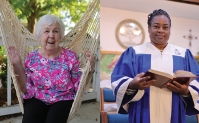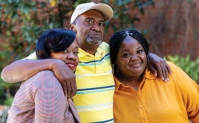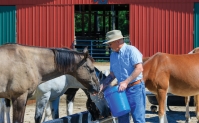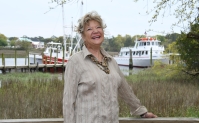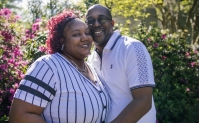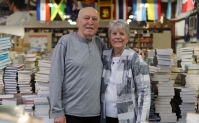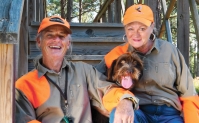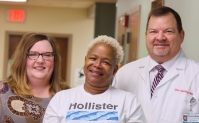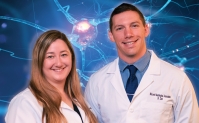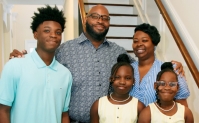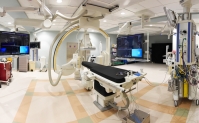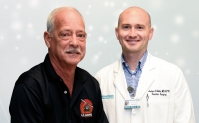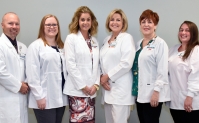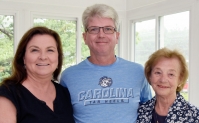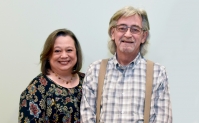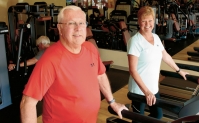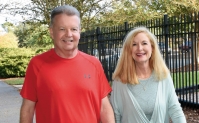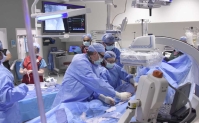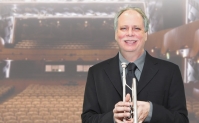You Inspire The Best in Us.
With the many advances in care and treatments, today’s patients have more and more reasons to expect the best outcomes. Here are the incredible stories of our patients and their journeys. Click on a thumbnail and scroll down to view each story.

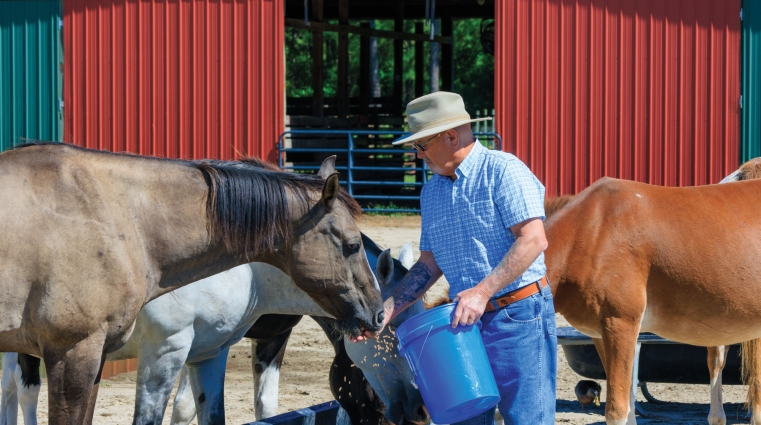
Rock Steady
By Tammy White
Living with Parkinson’s disease can be challenging, especially when one becomes dependent on others to perform everyday tasks.
When Florence resident Marion Broach began experiencing tremors in his right hand, he went to see his primary care physician Dr. John Mattheis with McLeod Family Medicine Center. Suspecting Parkinson’s disease, Dr. Mattheis referred Marion to Dr. Deborah Kirby with McLeod Neurological Associates.
“Parkinson’s disease can occur when the brain cells responsible for making dopamine, a chemical that helps coordinate movement, stop working or die,” explains Dr. Kirby. “Parkinson’s is classified as a ‘movement disorder’ because it can cause tremors, slowness, and stiffness, as well as walking and balance issues.”
Dr. Kirby initially treated Marion’s symptoms with medication. However, Parkinson’s is a lifelong progressive disease, meaning symptoms slowly worsen over time.
Marion’s disease advanced, and he began to develop other symptoms. His voice became softer, and he also experienced dizzy spells. He struggled with balance, and it was not uncommon for Marion to receive scrapes and bruises from his falls. Dr. Kirby increased Marion’s medications in an attempt to control his symptoms.
“I had to use both hands to get up from a chair,” recalls Marion. “When I would walk, sometimes my feet would suddenly feel as if they were stuck to the floor.”
Medications make it possible for people to lead fulfilling and productive lives, but when they are no longer effective, surgical intervention may be an option.
McLeod Health offers a procedure called Deep Brain Stimulation (DBS), performed by Neurosurgeon Dr. Tripp Hines. There is an ideal “window” for DBS, and the timing will differ for each person. Dr. Kirby believed Marion could benefit from this surgery and referred him to Dr. Hines.
“DBS works by regulating abnormal signals in the brain,” explains Dr. Hines. “Through electrical stimulation, DBS aids in the treatment of movement disorders and can even be used to help control the symptoms of epilepsy and obsessive-compulsive disorder.”
After meeting with Dr. Hines, Marion understood that DBS would not be a cure for his Parkinson’s disease. Patients are carefully evaluated by the McLeod Neurosurgery team to determine if they are candidates for DBS.
“I went through a series of tests, including an MRI and a psychological evaluation to determine how much the disease had affected my brain,” recalls Marion.
“These tests are an important part of the evaluation process,” explains Dr. Hines. “Disease progression determines whether or not a patient is a good candidate for DBS.”
A very active man, Marion struggled with the limitations this disease had brought on him. In his younger days, he rode motorcycles and went hunting for hogs on horseback. In his golden years, he and his wife Betty took road trips through the mountains of Ohio to pick up hay for their horses and mules. When Marion received the good news that he was a candidate for DBS his response was, “Let’s get it done.”
During the medical procedure, thin wires called electrodes are placed in the brain. A pulse generator, a programmable device similar to a heart pacemaker, is inserted in the chest area just under the skin.
-
McLEOD REGIONAL MEDICAL CENTER FLORENCE
843-777-2000 -
McLEOD DARLINGTON
843-777-1100 -
McLEOD DILLON
843-774-4111 -
McLEOD LORIS
843-716-7000 -
McLEOD SEACOAST
843-390-8100 -
McLEOD CHERAW
843-537-7881 -
McLEOD CLARENDON
803-433-3000



-
McLEOD REGIONAL MEDICAL CENTER FLORENCE
843-777-2000 -
McLEOD DARLINGTON
843-777-1100 -
McLEOD DILLON
843-774-4111 -
McLEOD LORIS
843-716-7000 -
McLEOD SEACOAST
843-390-8100 -
McLEOD CHERAW
843-537-7881 -
McLEOD CLARENDON
803-433-3000
 Find a Doctor
Find a Doctor  Locations
Locations  Services
Services 